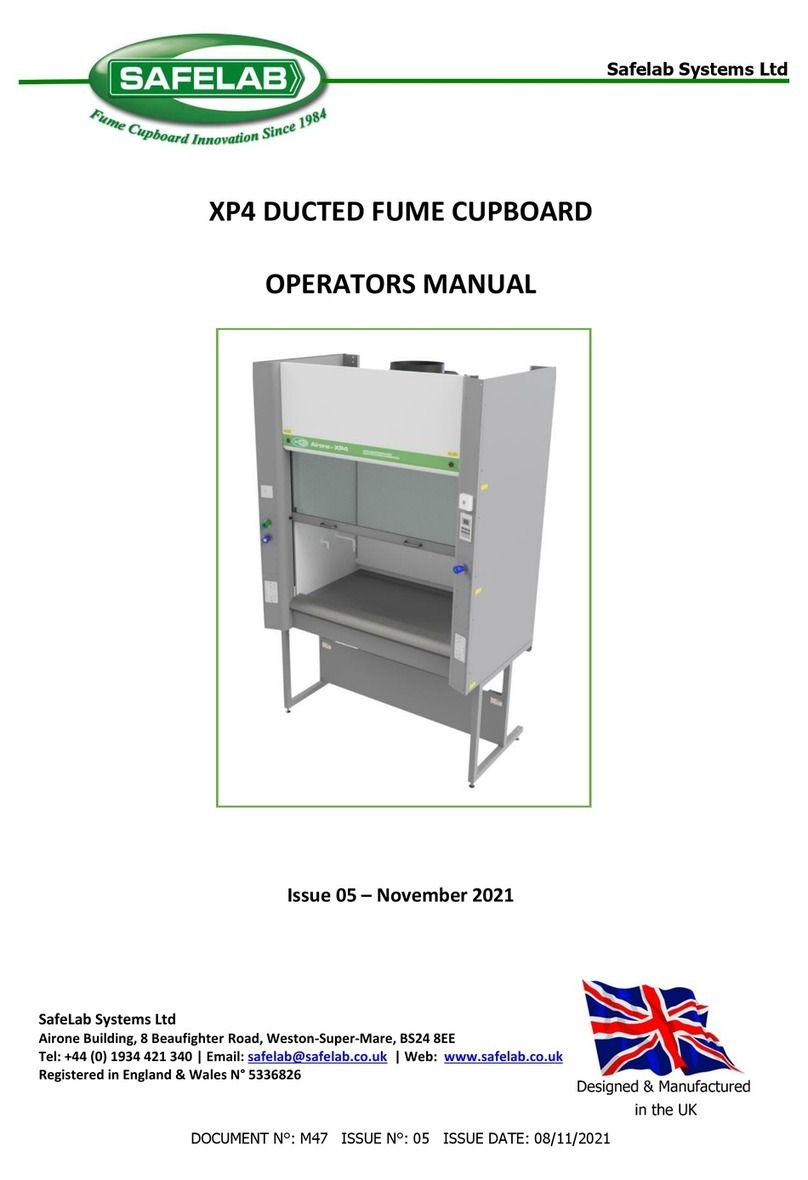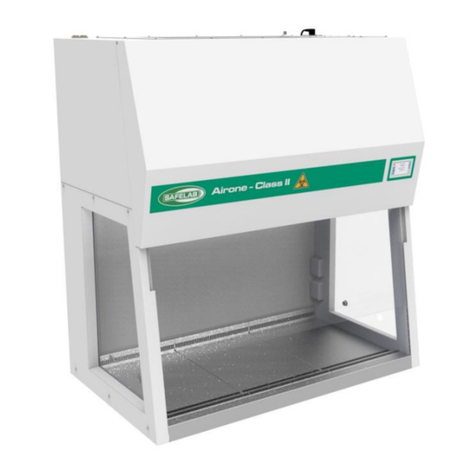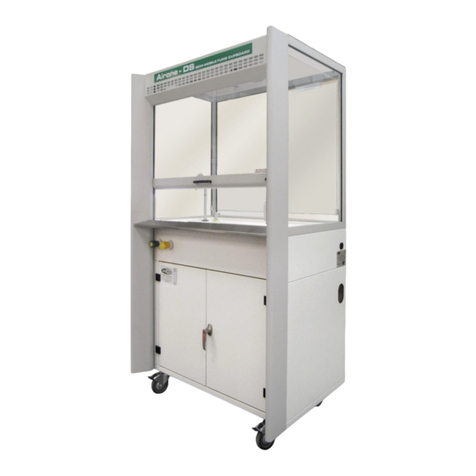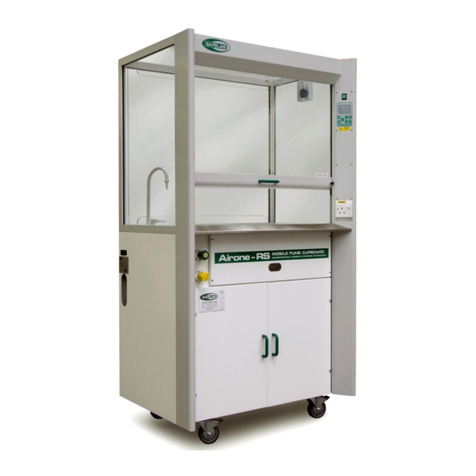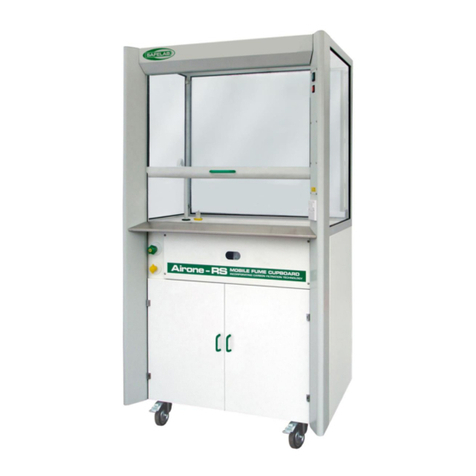OPERATING INSTRUCTIONS
(ENSURE THE UNIT IS PLUGGED IN TO THE MAINS ELECTRICAL SUPPLY)
1. Switch on at the mains socket (note: once commissioned, the unit should be left connected to a
live mains socket) and use the green ON/OFF switch 5 on the cupboard to switch on the integral
fluorescent light.
2. Turn on the extract fan with the fan switch 3 and observe that the green LED is lit on the low
airflow alarm panel 6.
3. Always use appropriate PPE (personal protection equipment) when using the Airone X Fume
Cupboard.
4. Assess the potential hazard of the intended procedure before commencing work.
The hazard level can be reduced by:
•Working with a reduced height of sash opening.
•Using reduced quantities of substances involved.
•Lowering reaction rates where acceptable.
5. When working in the cupboard, try and ensure that the sliding sash is in the lowest practical
position, and always lower the sash when the fume cupboard is not in use.
6. If using Bunsen burners, place them at least 20cm from the front sash, sides or rear baffle.
7. Try to place everything required for your process inside the fume cupboard prior to starting any
operation. This will reduce the amount of arm movements into and out of the fume cupboard and
hence reduce possibility of breakout (fume escape).
8. Position apparatus inside the fume cupboard so that disturbance to airflow at the sash opening
is minimised.
9. After use follow the correct procedure for disposal of any residues and leave the fume cupboard
in a safe state for further use by others.
10. The fume cupboard must not be operable without some sort of low airflow indication and it is
for this reason that the low airflow alarm is ‘live’ at all times.
There are two switches on the front right hand extrusion. The bottom (white) switch switches
the fan on and off whilst the top (green) switch operates the light.
Once the fan is switched off the inflow velocity will drop below the pre-set alarm point and the
low airflow alarm will activate both visually and audibly. It can be muted but the red low airflow
light will say illuminated. The alarm will (in normal operation) only reactivate once the fan has
been switched on and the airflow has increased above the pre-set alarm point threshold. Note:
alarm could reactivate if fan switch is off, and fume cupboard is acting as a chimney triggered
by draughts’ or positive pressure in lab –causing airflow across low airflow alarm (not in
normal operation).






